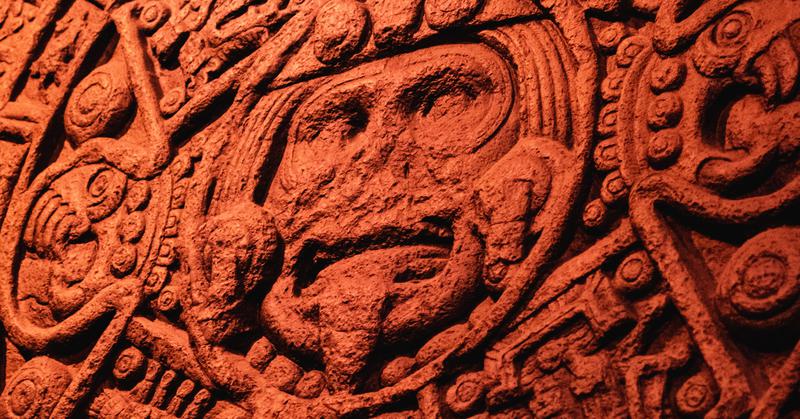by Jessica Denzer
July 21, 2023
Jessica Denzer received her B.A. in English Literature from Fordham University and her M.F.A. in fiction from Sarah Lawrence College. She is a researcher in residence at the New York Public Library and writes fiction and nonfiction. Her work has appeared in various literary journals and anthologies, and she supplies a range of editorial contributions to West Trade Review, L’Esprit Literary Review, and Four Way Review. She is currently working on a novel and a collection of essays.
A Purpose to Our Savagery by Tomás Hulick Baiza; RIZE; 182 pages; $19.99
In his debut collection, A Purpose to Our Savagery, Tomás Hulick Baiza explores identity, family, and the mythology of power, placing his characters keenly in the eye of subjugation while each attempts defiance. The stories in his collection present a range of perspectives. The reader moves seamlessly through stories of mythic hummingbirds, lonely teenage boys, and a community of seals.
Throughout the collection are the linked narratives of Daniel – the child of an estranged and neglectful white father and a fiercely protective Chicana mother. Daniel’s coming-of-age story is woven between mythology, science fiction, and the darker narratives of heartbreak, exploration, and displacement.
Baiza’s stories center around the “I,” even in his third-person narratives. In his more fantastical modes, where the tangible and practical world collides with mythology and horror, Baiza moves away from the omniscient approaches to point-of-view that magical realism often prefers to messier and more intimate close third or first-person techniques. Stories like “Hole”, a rather dark narrative about a woman traveling alone who is pushed into a deep pothole on a foreign street, succeed in their close-third perspective, tightening the reader around the horrific events. At times, however, the use of first-person narration loses itself in its story, becoming too immersed in the world it attempts to create and thereby losing connection with the reader:
We were forced early on to accept our limitations–orcas being fully aquatic on the one flipper, and seals mostly aquatic mammals on the other–if we were going to get this project on the ground, so to speak. We would need help. We would need the damn bears. We hate the polar bears because they’re idiots and eat us every chance they get. It’s been that way forever.
Moments like this appear in “A Seal’s Song”, a novella length work in first-“seal”-perspective which works hard to create sympathy and understanding for characters and situations slightly beyond our own world. However, the scaffolding of the narrative is too visible; there is too great an authorial presence in these scenes, a loud undercurrent of anxiety about sending a particular message in a particular way aimed at a particular audience—a distraction which, ironically perhaps, serves to both weaken the overall story and the message itself.
When Baiza succeeds, however, he does so wonderfully. In “Huitzilin,” the reader is met with a present tense, first person narrator, an unnamed “I” who died in a car accident four years prior to the events in the story. “Sunlight pools, trickles, and then pours over the edge of the mesa. No sooner am I reborn than I am drawn to it, as I am drawn to flowers that grow in my father’s yard,” the story begins, setting a quick poetic pace that will continue throughout. Reincarnated as a warrior hummingbird (huitzilin is the Aztec word for hummingbird) the narrator has one day on earth to say goodbye before heading off to fight for Huītzilōpōchtli, also known as Tonatiuh, the sun god and the god of war.
According to the mythology, Huītzilōpōchtli siblings, angered by his birth, seek to kill Cōātlīcue, the Great Mother. Huītzilōpōchtli defends his mother in this cosmic battle, and so defends the world. Baiza artfully avoids exposition in “Huitzilin”, placing everything within the narrator’s stream of consciousness. The “I” narrator remains unnamed, her physical identity of woman is replaced by the immediate now, the present-tense warrior hummingbird who is given one last glimpse of human life. In this way, the story attempts to challenge concepts of identity, what the “I” means both in life and in death, as one being is reborn into another.
Baiza’s use of the Huītzilōpōchtli myth also suggests the theme of family and identity inherited through both parentage and the mythic narratives of our ancestors. This inheritance is perhaps most present in the linked stories of Daniel. The collection begins with “Nezahualcóyotl,” focusing on Alma, Daniel’s mother. We first meet Daniel in his red striped bell bottoms with bells on his shoes, a fashion tactic his mother adopted to help keep track of him. He’s a lively, loving, blue-eyed, blonde four-year-old whose whiteness worries Alma; her identity as his Chicana mother is challenged by his stark resemblance to his absent father, Bill. But Bill’s whiteness is not simply a label that functions in contrast to Alma’s cultural narrative. Instead, Bill’s identity as a white male is weighted with the historical narrative of patriarchal imperialism that defines both her feminine body and brown skin as subjugated and owned, while also forcing her to confront her repressed internalized desire to be owned. The story is written in fragments and out of time, arranged by memory and experience, emotionally organized in the way obsessive memory functions to reveal trauma. Through this lacing of time, the narrative places us at the center of Alma’s dilemma: What does it mean to be Chicana, American, Mexican, Indigenous, Brown, woman, lover, mother? Who is she in the face of the son she loves, and who is her son if he is also half the face of her oppressor? How can she protect both him and herself?
These same questions return at the end of A Purpose to Our Savagery when we meet Daniel for the last time. Now, he is grown, eighteen, and leaving home. “Only gabacho kids move away from home just like that,” his younger half-sister, Cami, tells him when she learns of his plans to go to Michigan for college. The story begins with Daniel leaving, but much like “Nezahualcóyotl,” “Aledante” laces time in a new order, fragmenting memory with the narrative action. We begin with the long roads of Nevada but are quickly pulled back to earlier that morning, an intimate scene between mother and son. As the fragments thread Daniel’s memory to the narrative action, we learn of his first sexual encounter, his sensitivity, and desire; we learn of his “otherness’, his strained relationship with his father, his guilt for only being half his mother; we learn of his need to explore and understand his place in the world.
Daniel’s identity, like the unnamed “I” in “Huitzilin'', and his mother’s identity in “Nezahualcóyotl'' is challenged through Baiza’s bending of time and memory, each fragment weighted with the heaviness of history, family, and mythology. Standing at a gas station, now miles from his home and his family, Daniel questions himself in the eyes of others: “Do they think I’m gabacho now? Under the white sun, he watched the digits slowly tally the gallons and the dollars on the pump. Do we not get to go places, too? Why should I have to stay home to be me? What does ‘being me’ even mean?”
Baiza’s placement of Daniel at the gas station is interesting; the journey tallied under the “white sun”, allows for potential symbolism, the looming image of the distant father, Bill, the dominate masculine figure in each of the Daniel narratives, who primarily serves as both oppressor and failure in Daniel’s identity formation. In other words, Bill as an idea is in constant contrast to Bill as a reality, a white father as imperialist patriarch in contrast to dead-beat dad, drunk, neglectful, and wholly unsupportive. Daniel’s thoughts are placed directly in conversation with the history and mythology of power, allowing him to challenge who he is supposed to be while simultaneously giving him a path to choose what “‘being me’” means.
Through the final installment of Baiza’s collection, we are given a coming-of-age story, yes, but also a potential coming-to-understanding of self. The self is not a stagnant thing; it is not only the things inherited, or the memories passed down. Identity should not be subject to a mythology of power but rather the reality of love. And love, perhaps, is the savagery that gives purpose to the collection, even in its darkest moments. Each story begs us to shed the mythologies of historical and oppressive power. We are placed again and again in a darkly beautiful space, a hole filled with the shameful ways we are oppressed and oppress others.
It is in this same space where we are confronted with our true self. Baiza’s stories ask us to love ourselves, regardless. It is for love, Baiza’s stories seem to say, that Huītzilōpōchtli fights his cosmic battle.
©2023 Iron Oak Editions LLC
__________________________________________________________________________________________________________________________________________________________________________
__________________________________________________________________________________________________________________________________________________________________________
__________________________________________________________________________________________________________________________________________________________________________
__________________________________________________________________________________________________________________________________________________________________________
__________________________________________________________________________________________________________________________________________________________________________
"Love as Savage Purpose: Identity and Power in Tomás Hulick Baiza’s A Purpose to Our Savagery
FICTION REVIEW
Stay Connected to Our Literary Community. Subscribe to Our Newsletter
Image by Luis Domenech from Unsplash




